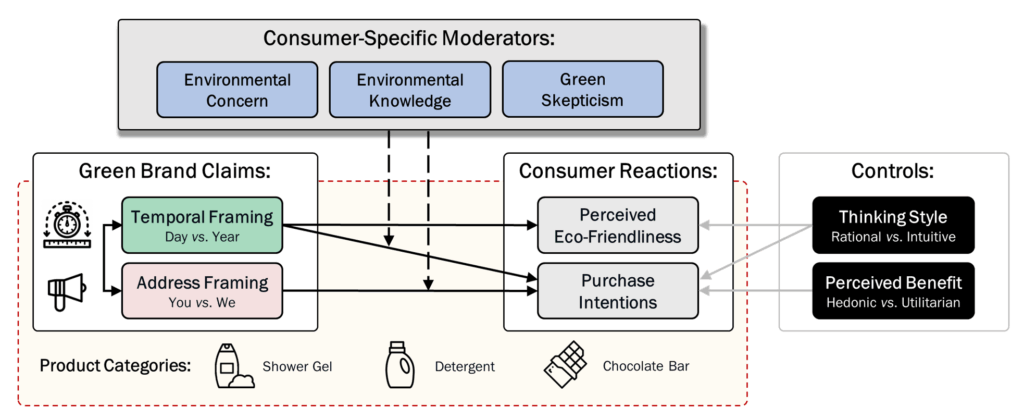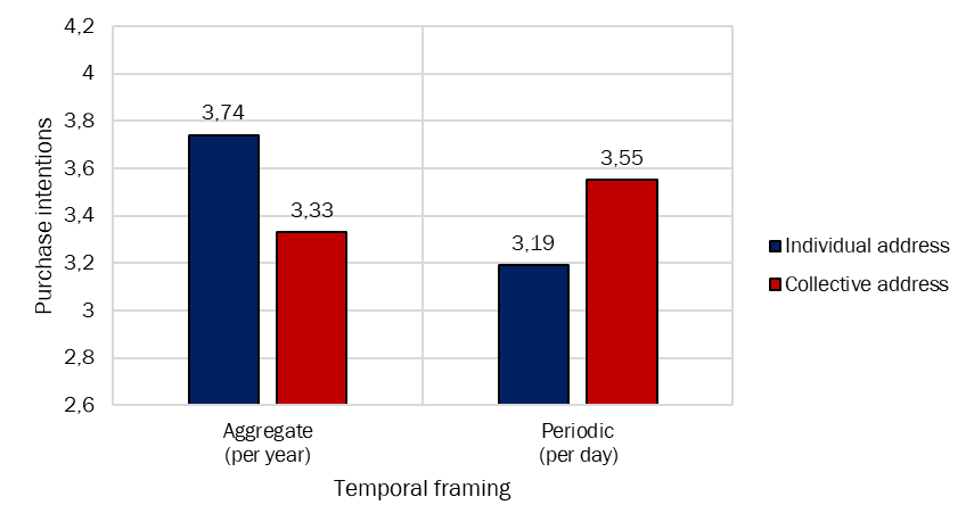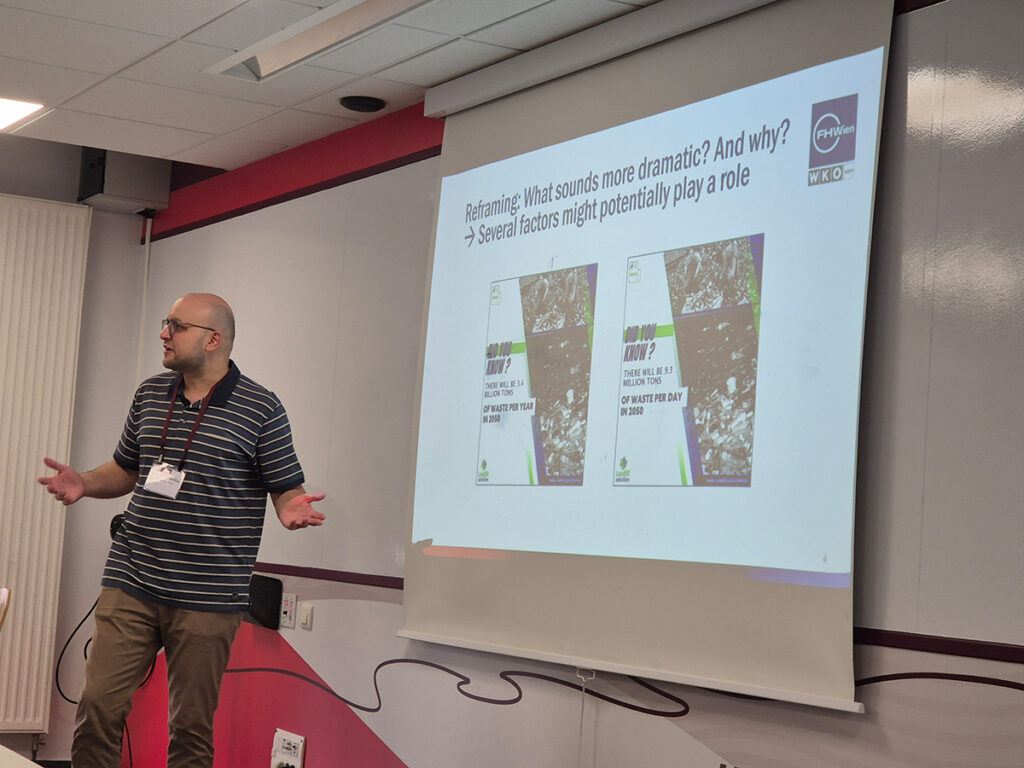Senior Researcher David Bourdin presented his study on number-based sustainability communication at the World Marketing Congress of the Academy of Marketing Science in Dijon.
As one of around 450 international researchers, David Bourdin, Senior Researcher in Marketing & Sales Management at FHWien der WKW, took part in this year’s World Marketing Congress of the Academy of Marketing Science (AMS) at the Burgundy School of Business in Dijon, France, from July 2 to 4, 2025. He moderated his own thematic block as session chair and also presented his study on the number-based framing effects of brand messages with time-related sustainability claims. He co-authored the paper with Bettina Gatterer, a graduate of the Master’s program in Communication Management at FHWien der WKW.
Effect of temporal framing and personal address on purchase intention
Companies often underpin their sustainability efforts with figures to increase credibility, such as tons of plastic waste saved, CO2 emissions avoided or liters of water consumption reduced. Framing effects of time-related claims as per day, month or year have not yet been researched in the context of sustainability communication.

Fig. 1: Research design
This study not only examined the effect of temporal framing (daily versus annual), but also the effect of a personal (“you”) versus collective (“we”) address (see Fig. 1).
Online experiment delivers surprising results
In an online experiment, 200 consumers evaluated one of three different advertisements (shower gel, detergent or chocolate bar). The sustainability messages were also varied 4 times (see example stimulus in Fig. 2). The combination of advertisement/sustainability message was displayed randomly to the participants.

Fig. 2: Example stimulus
The results were astonishing. Contrary to predictions, there were no significant main effects – neither for the temporal (daily versus annual) nor for the personal versus collective approach. When analyzing the interaction effects, the following correlation emerged (see Fig. 3):
- Time-related framing with “annual” had a significant influence on the purchase intention in connection with the personal address.
- Time-related framing with “daily” had a significant influence on the purchase intention in connection with the collective address.

Fig. 3: Interaction effect
An individual address therefore makes the impact more tangible and is more motivating. On the other hand, with figures that are expressed per day and are therefore lower, the collective address works better because it emphasizes the joint, continuous contribution.
In order to confirm these preliminary results, further studies with larger, representative samples and other product categories are planned for the coming months. We are looking forward to the results!





